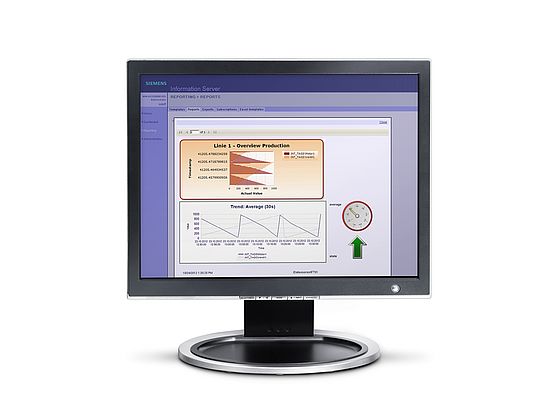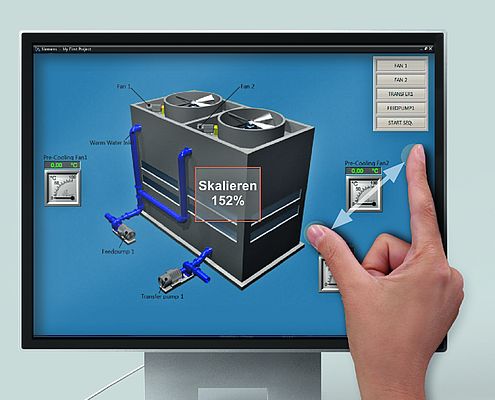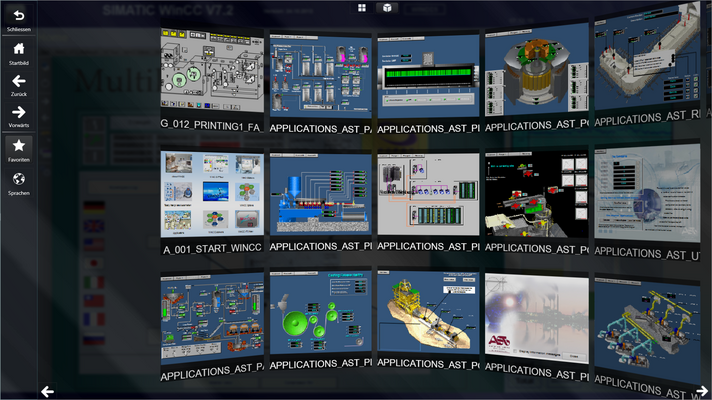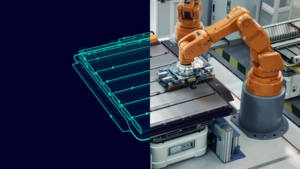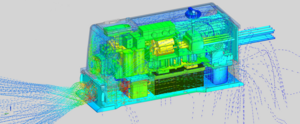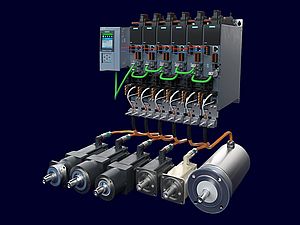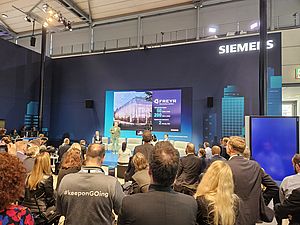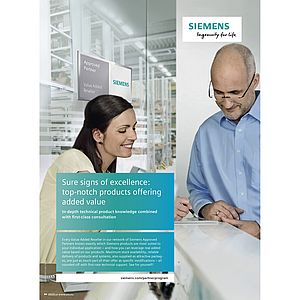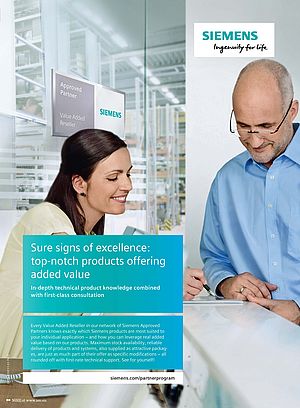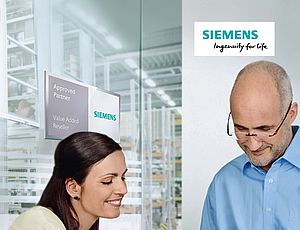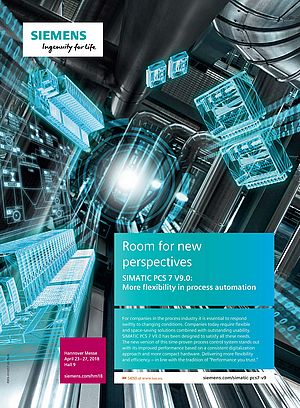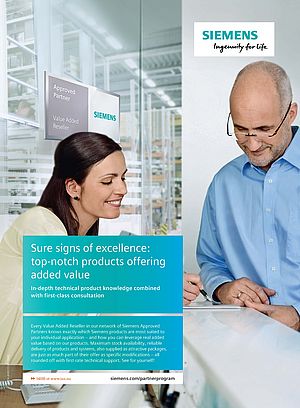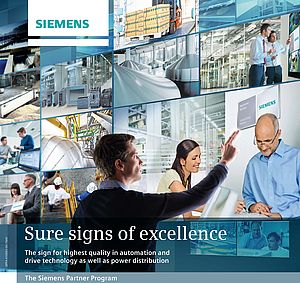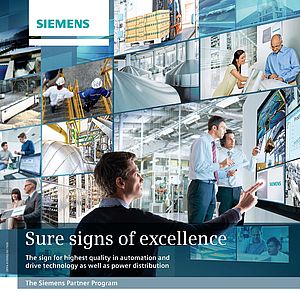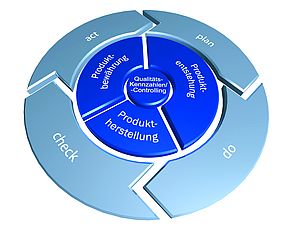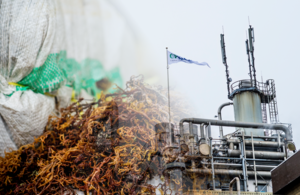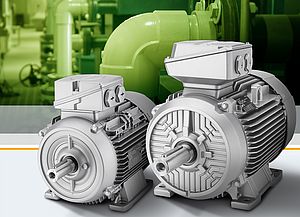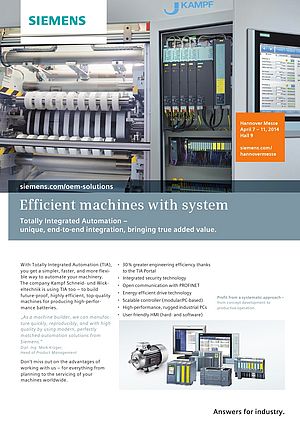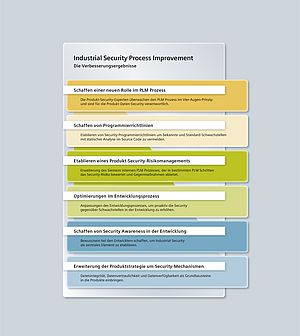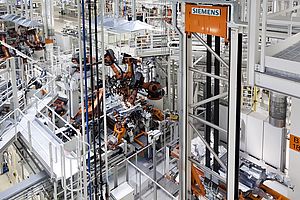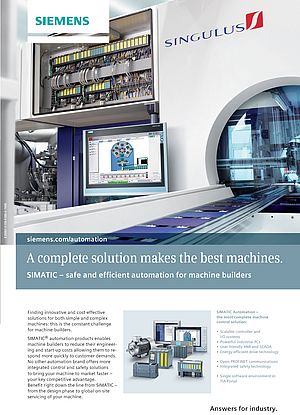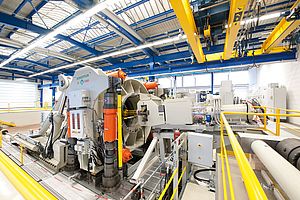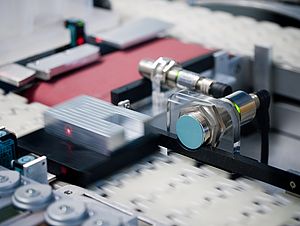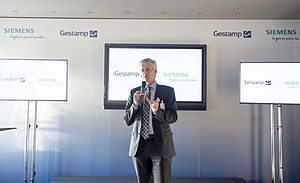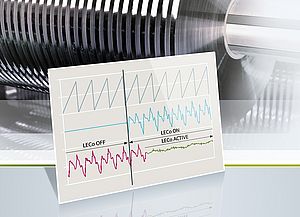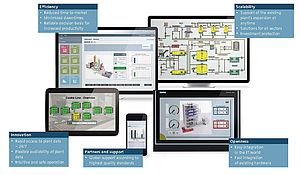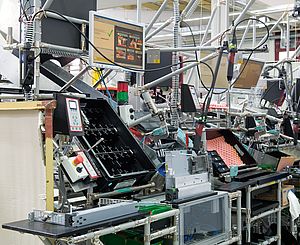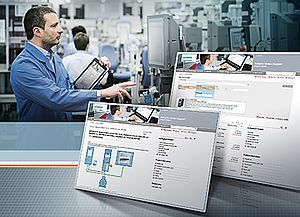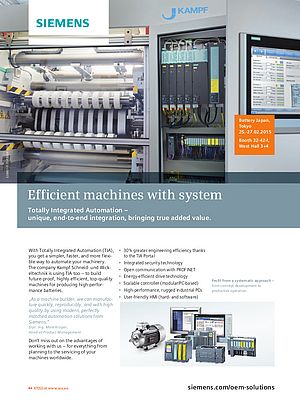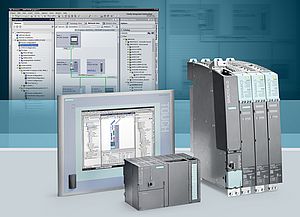A well-known SCADA system has become one of the world's most frequently used visualization systems due to its flexibility and openness. In over 15 years, it has conquered applications in all industries. The new version comes with multitouch support, as well as plant-wide long-term archiving, and new analysis and report functions. It has thus grown into a plant information system.
In fierce global competition, the crucial factors for plant operators, next to monetary concerns, are maximum possible productivity, availability and quality. The SCADA system used must meet these requirements to be successful in the market. Over the total service life of a plant, adaptations, expansions or new requirements such as legal stipulations are not just probabilities but certainties. Thanks to its system scalability, Simatic WinCC can grow with requirements - from single-user systems to distributed server/client systems. Redundant servers guarantee maximum availability - and the Web clients enable remote control and monitoring via the intranet or Internet.
All-inclusive archiving
Processes in all industries can only be optimized if all the relevant process data is available. For this reason, Simatic WinCC places the greatest value on efficient and powerful archiving. Reliability and security thanks to integrated redundancy concepts are provided, as well as flexible data display and analysis. With Version V7.2, the system now offers gap-free archiving and automatic compression algorithms for weekly, monthly and yearly cycles as the basis for comprehensive and detailed reporting. Powerful compression according to the "swinging-door algorithm" significantly reduces memory requirements. Integral statistical calculations (min, max, total, average, integral) are now supplemented with automatic calculation of the difference and retrospective input or correction of "manual" or lab values. In the case of manual change within automatically generated archives, however, special precautions need to be taken: Labeling of the value as "manual", recompression, and updating of the documentation via an automatically generated operation message are indispensable. Pharmaceuticals and food & beverages are just two of the industries where this traceability of operator actions is demanded. In combination with documenting changes to the configuration, it is one of the foundations of validation in accordance with FDA (21 CFR Part 11) and EU 178/2002 (Food Law).
Long-term archiving of the highest quality
In Version 7.2, the "Process Historian" option, a powerful long-term archive, has been added to the archive functionality included in WinCC. Process Historian archives all the process values and messages occurring during production centrally and in real time. The maximum system configuration is not restricted to one WinCC system in a plant. The data of several WinCC projects can also be archived together. Managing the huge data volumes generated in the process presents the database system used with particular challenges. The Microsoft SQL Server 2008 is used as a reliable and secure platform.
Process Historian is integrated into the WinCC system on an additional computer. If maximum security and availability are required, it can also be configured redundantly. The database is set up in the "Process Historian" configurator. This supports users in all database-specific settings. Thanks to its scalability, Process Historian can be adapted to a change in data volume at any time and without interrupting production. WinCC trend windows or message displays enable transparent access to all archived data at any time. Integral statistical functions provide the first indication of potential problem spots here.
Information advantage instead of data deluge
However, reliable archiving of long-term-relevant data is just the basis for later optimization. Only a plant-wide reporting system enables meaningful linking of the collected information. In a second step, this allows plant operators to detect critical plant areas and to carry out optimization that generates genuine value added with regard to cost efficiency and productivity. The "Information Server" option is such a reporting system. On the basis of field-proven Microsoft Reporting Services, the data is available in a Web-based reporting platform - target-group-oriented, anywhere, any time. Transparent access to WinCC archive data means the data can be used to create detailed reports for the highest demands, quickly and easily.
A host of tools support users in creating and managing reports. Supplied templates stimulate ideas and indicate different applications. Reports can be initiated cyclically, on an event-driven basis, or on a demand-driven basis. Finished reports are available via Web-based interfaces in Microsoft Internet Explorer, and they can also be forwarded in parallel to an e-mail recipient. Information Server supports the classic pdf format. Thanks to add-ins in Microsoft Word and Excel, these widely used Microsoft Office applications can also be used for creating reports. The functionality of Information Server is rounded off by standardized programming interfaces via which developers can implement links between the archived WinCC data. Thus, for example, end users can use Microsoft's integrated Report Designer to easily create and publish reports that are precisely tailored to their requirements. Access to process data enables fast optimization of production sequences, as well as plant asset management via the Internet.
In this way, suitable analyses can be created for all corporate levels. The manager receives key production figures, the quality coordinator receives the quality report, and the maintenance personnel get information on current faults. The information level can be precisely adjusted here to the respective target group. This helps to detect weak points faster, minimize downtimes, and thus offers effective value added with regard to boosting productivity and availability, and reducing costs.
A SCADA system for global use thanks to Unicode
It is well known that machine manufacturers in Europe export their systems globally. This means special challenges must be met, especially in Asia, but also in regions using the Cyrillic alphabet. It must be possible at any time to switch the display language of all interfaces during the engineering phase and at runtime. This applies not only to the operating system, but also to the WinCC options. If, for example, the target language Chinese is activated, a European service engineer (even a very experienced one) will find it extremely difficult if not impossible to find his bearings. Thanks to Unicode support in Simatic WinCC V7.2, all texts can be exported to the standardized Unicode format, translated, and then imported again. Even regional sub-languages can be set. During operation, users are then in the position to set their language of choice: And this can be done at any time, at the touch of a button, without delay, and both for local operation and for access via the Internet. The benefits for use in the global market are obvious.
Multitouch operator control concepts, now also in automation
Efficient operator control concepts and up-to-date and clear visualization of industrial plants have always been trademarks of WinCC. However, the popularity of consumer devices like smartphones has an increasing influence on the operator control concepts of traditional production plants. Intuitive gestures like zooming or swiping across the screen make operator actions even simpler and more intuitive. The latest version of Simatic WinCC supports the use of multitouch gestures for two-finger operator inputs.
The familiar WinCC zooming functionality can be used optimally with multitouch systems. In addition, WinCC offers "decluttering" as a way of showing screen elements dependent on the set zoom factor (e.g. visible at a zoom factor greater than 150%). However, multitouch gestures can also be implemented for a type of navigation between process screens that is new to industry. Screens are selected here by swiping across the screen instead of using a button.
Another benefit is support for two-hand operation. Switching operations are only possible if an additional enabling button is activated simultaneously. This prevents accidental or inadvertent switching operations.
More than just SCADA
All Simatic WinCC V7.2 innovations have been presented at the SPS/IPC/Drives 2012 trade fair. As well as full SCADA functionality anywhere and any time, they offer an adjustable, optimal plant overview for all users and all plants.



